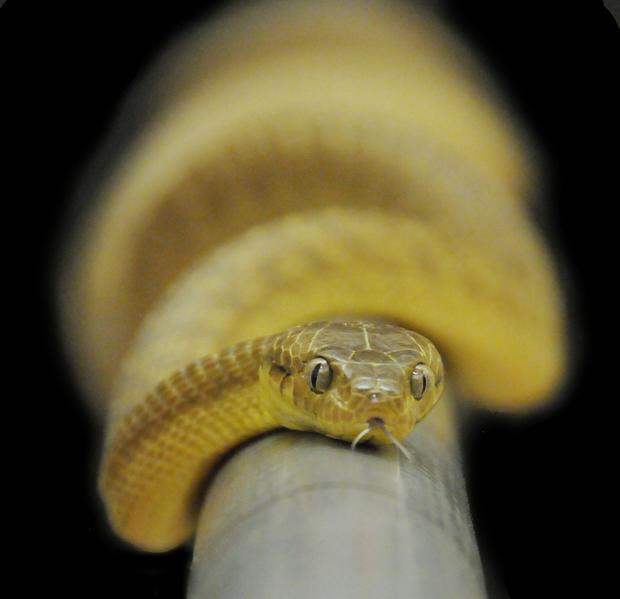Snakes Learn To Scale Smooth Cylinders, Colorado State Researchers 'Amazed'
FORT COLLINS, Colo. (CBS4) – For the first time in more than 100 years, researchers have discovered a new mode of locomotion in snakes. Researchers from Colorado State University found at least one species of snake is capable of lassoing its body around smooth cylinders, holding on to the cylinder by gripping on to itself and then slowly scaling upward.
Before the discovery, experts thought snakes only had four common ways to move.
"We were absolutely amazed," CSU Professor Julie Savidge told CBS4's Dillon Thomas. "It was an accidental discovery."
Savidge, and a few other researchers, discovered the "lasso locomotion" style recently in the Pacific Island of Guam. Two native species of birds have been decimated by the accidental introduction of the brown tree snakes to the island. Savidge joined Tom Seibert, and researchers from the University of Cincinnati, in researching what could be done to preserve the bird populations.
In doing so, they attempted to place a round and smooth cylinder around a post topped by a bird house. The hope was that the cylinder would prevent the brown tree snake from being able to ascend to the bird house.
During their test researchers placed three different cameras in a controlled setting and documented how the snake attempted to climb. At that point humans had only discovered four ways for snakes to move: concertina, lateral undulation, sidewinding and rectilinear locomotion.
However, when they returned to their study they found the snake had successfully ascended their setup. The footage from the night shocked researchers as it showed the snake gripping on to itself to slowly ascend the smooth surface.
"I had never seen anything like it before," Savidge said. "This snake has been very well studied by a lot of people. Yet, we are just discovering this."
Savidge, who has studied the brown tree snake for more than 30 years, said it is one of the most studied snakes in history. However, it wasn't until the CSU and Cincinnati teams recorded the lasso locomotion in Guam that anyone realized snakes were capable of doing so.
For lack of a better comparison, Savidge said the snake's actions are similar to that of a human bear-hugging a smooth and round surface and slowly using friction from within to climb. Without hand or legs, the snake "lassos" itself around the cylinder, grips on to its own body and tail, and slowly shifts upwards. The only thing holding the snake to the surface is its tight grip on itself.
"It has these little bends in the body. Those move upward. It looks like a wave that gradually moves the snake upward," Savidge said.
The process isn't convenient, but rather strenuous, for the brown tree snake. Depending on the distance, ascension can take an extended time to complete.
"You can see the snake heavily breathing," Savidge said.
While the method has been proven for the brown tree snake, it hasn't been documented with other species. However, Savidge said that doesn't mean others are not capable of the same skill.
Though the discovery made the mission of protecting the bird populations in Guam more challenging, Savidge said she was proud to be part of a university which helped unveil this new groundbreaking discovery.
"We were disappointed that they could defeat out baffle. But, it was exciting to see something so unique, Savidge said. "Even though we think we know a species, there is so much more to learn."






